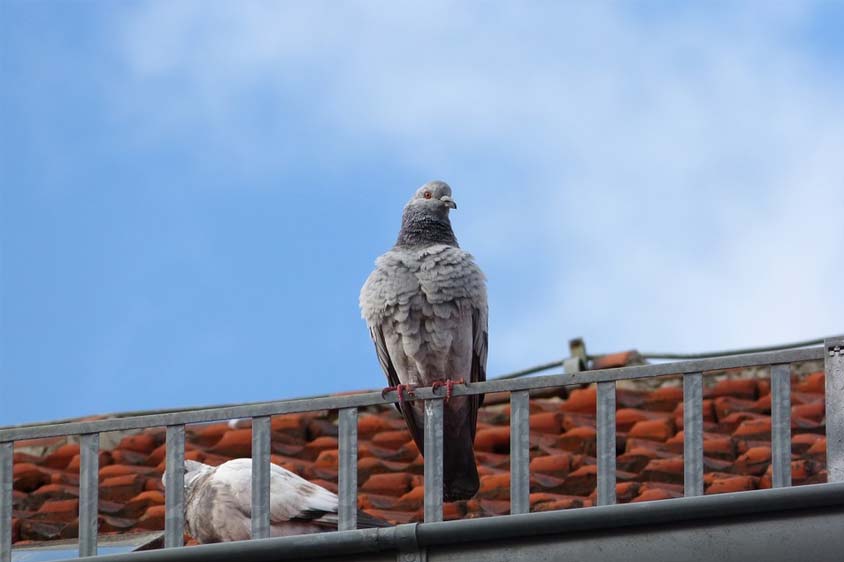While it may be pleasant to have some bird singing near your home or your property, it is not great for your roof. Bird poop can damage your roof and shorten its lifespan. Plus, birds tend to leave behind nests and other debris that may also damage your roof.
Why Does Bird Poop Damage Your Roof?
While shingles and other asphalt materials stand up to weather conditions, they don’t do well when exposed to acids. Bird poop contains uric acid, which is also what makes it white. This is a powerful substance with a very low pH that can eat into asphalt and other roofing materials.
When shingles are exposed to uric acid the asphalt slowly breaks down. This can cause the colorful granules on the top of the shingles to come off. Then, the acid can bore a hole into the rest of the shingle.
How to Get Bird Poop Off Your Roof
If you have many feathered visitors, it’s a smart idea to take a peek at the top of your roof and see if the bird have left droppings behind. If they have, how do you get poop off your roof?
It’s best to call a professional to remove bird poop from your roof, because they’ll also need to examine your shingles to determine if they need to be replaced. Also, it can be dangerous for homeowners to step on their roof, not only because they may fall, but because they may do damage to the shingles by stepping on them.
Your professional roofer will likely need to use a special bird poop cleaner to remove the droppings. They harden quickly and become tough to remove. They shouldn’t use a power washer or a scraping tool, which can harm the shingles even more. If the bird poop can’t be removed without damaging the shingles, your roofer should simply replace the affected shingles.
Prevent Bird Poop Damage On Your Roof
Once your existing shingles are clean, it’s a wise idea to take some protective measures to prevent birds from spending too much time on your roof. Depending on the type of bird and what they’re doing on your roof, you could try the following options:
- Place bird feeders further away: If your bird feeders are close to your roof, birds may be tempted to roost on it instead of nearby trees or your fence.
- Install spikes: Spike strips or other physical barriers can prevent birds from landing on your roof.
- Close off the attic: Sometimes small gaps in your home near the attic can attract birds to nest in. If you remove the temptation, birds won’t spend time on your roof.
Take care when removing bird nests or discouraging birds to land on your roof. Some birds, as well as their nests and eggs, are legally protected under the Migratory Bird Treaty Act. If you have persistent bird presence on your roof, it may be best to get the help of a pest removal company.

